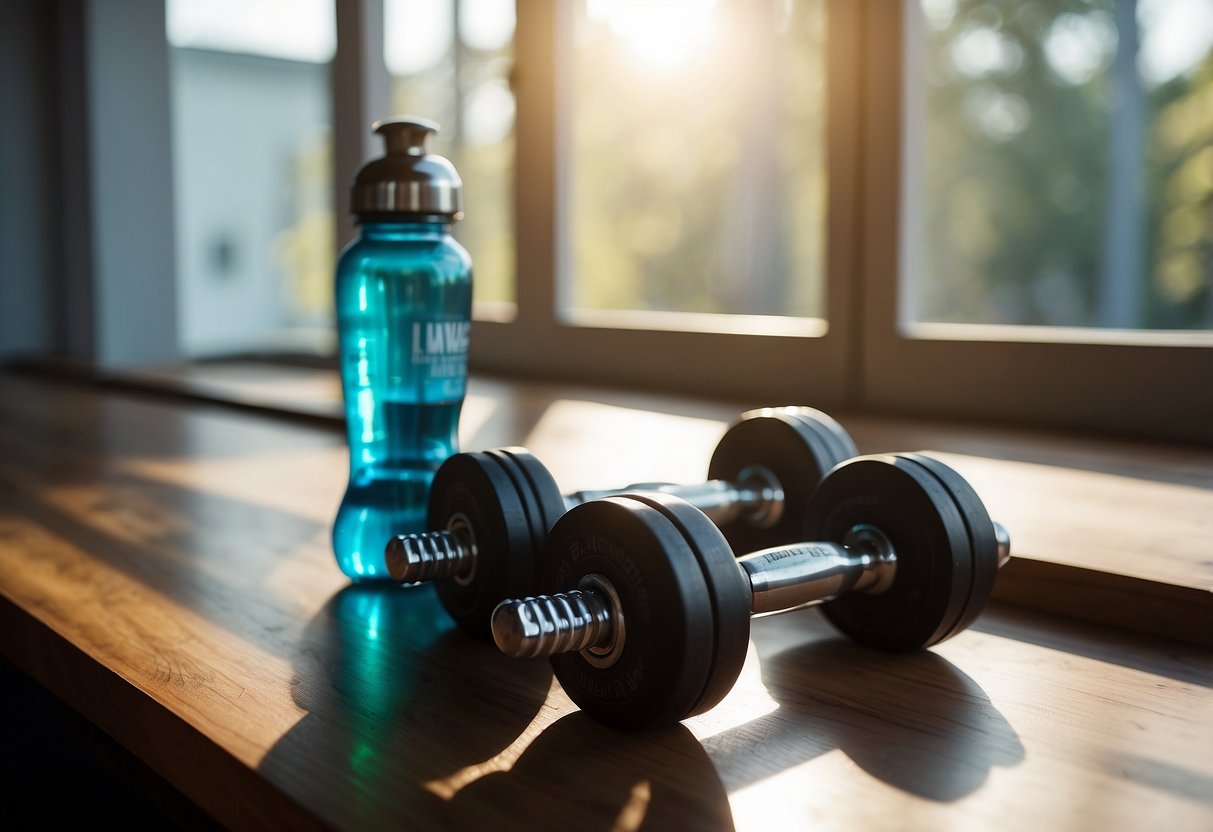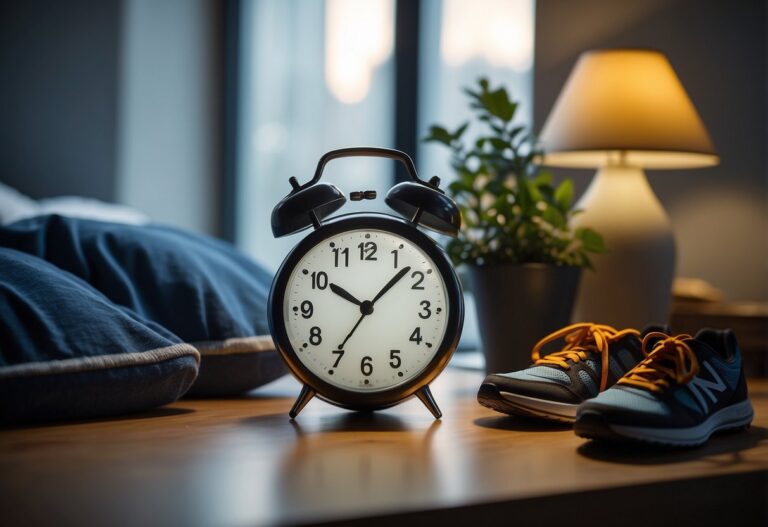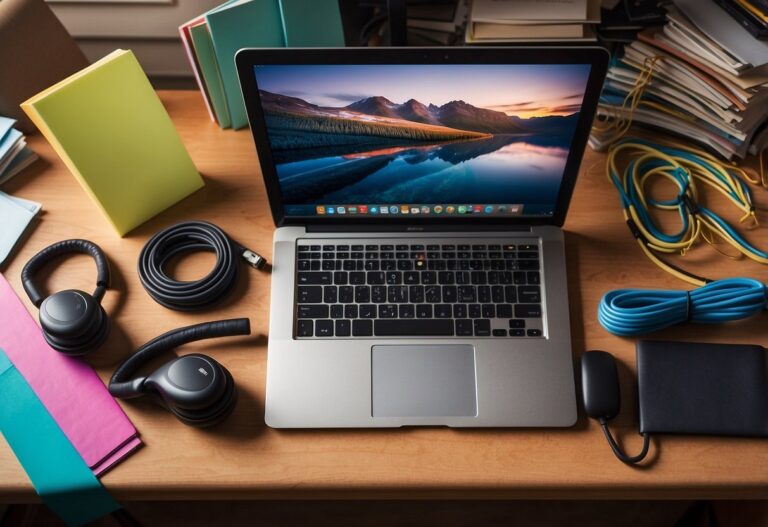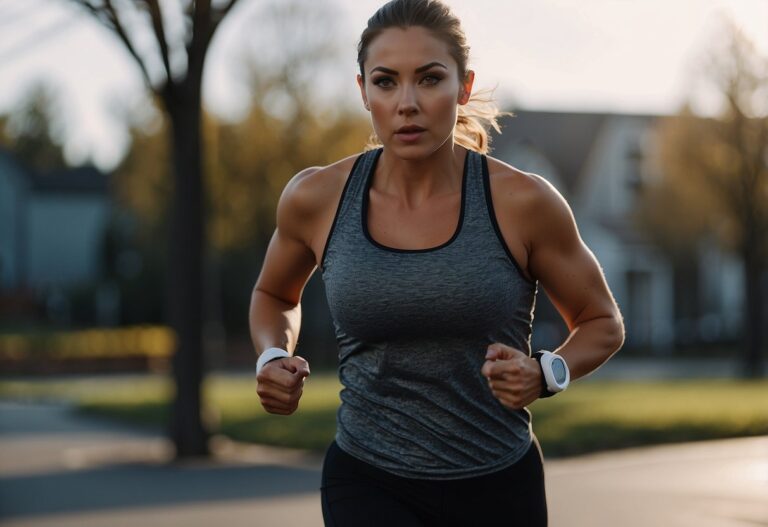In today’s busy world, finding time for exercise can be challenging. Mini workouts, which are short bursts of exercise that fit easily into your day, can be an excellent solution. These quick sessions help you maintain fitness without taking up too much of your time.

Wondering how you can fit exercise into your hectic schedule? Mini workouts are the answer. They allow you to stay active even with a packed calendar. You don’t need to spend hours at the gym to feel the benefits; just a few minutes here and there can make a big difference.
High-Intensity Interval Training

High-Intensity Interval Training (HIIT) is a great way to get fit fast. It involves short bursts of intense exercise followed by brief rest periods. You might sprint for 20 seconds, take a 10-second rest, and repeat. These sessions are quick but very effective.
One classic HIIT example is the Tabata method. It includes 20 seconds of all-out effort, like sprinting, followed by 10 seconds of rest, repeated for four minutes. Simple, yet challenging!
This kind of training can be done anywhere. You can try a 20-minute HIIT routine at home with just bodyweight exercises, like squats and push-ups. Perfect if you’re short on time but want a full-body workout.
HIIT also works for different fitness levels. Beginners can start with easier exercises and shorter intervals, while more experienced individuals can push harder and longer. You can adapt it to your needs and progress over time.
Not much equipment is needed either. Exercises like burpees, jumping jacks, and mountain climbers are done just with your bodyweight. Even with equipment, a set of dumbbells or a skipping rope can offer a lot of variety.
So, whether you’re new to working out or looking for a fresh challenge, HIIT could be a perfect fit.
Bodyweight Exercises
Bodyweight exercises are fantastic for all fitness levels. You don’t need any equipment, and you can do them anywhere, making them perfect for quick and effective workouts.
Push-ups are a classic move. They work your chest, shoulders, and triceps. Start with a few reps and gradually increase as you get stronger. You can modify them by doing them on your knees if needed.
Squats are great for your legs and glutes. Ensure your knees don’t go past your toes and keep your back straight. Doing squats regularly will help build lower body strength.
Planks are excellent for core strength. Try to hold a plank position for 30 seconds, maintaining a straight line from head to heels.
For a full-body workout, burpees are a great choice. They incorporate squats, push-ups, and jumps, giving you a high-intensity exercise that gets your heart rate up.
Bodyweight exercises like these are easy to fit into your day. Whether it’s right after you wake up or during a break at work, you can do a few sets to stay active and healthy. For more detailed routines, you can check out Nerd Fitness’s guide.
Resistance Band Workouts
Resistance bands are a fantastic tool for your workouts. They are lightweight, portable, and can be used anywhere.
You can start with simple exercises. For instance, step on the band, shoulder-width apart, and pull it up above your shoulder. Then, perform a squat by pushing your hips back while keeping your chest up. This boosts leg and core strength.
Another great exercise is to loop the band around both hands. Make fists, extend your arms straight overhead. Keep one arm in place while pulling the other arm down, bending your elbow to 90 degrees.
For targeting the glutes, try mini band exercises. Mini resistance bands place tension on the muscles, making them work harder. This helps break down muscle tissue, which then repairs and grows stronger. You can explore various mini band exercises from this comprehensive guide.
Using resistance bands is easy. They add resistance to your movements, making your muscles work harder. This leads to muscle growth and improved strength. Whether it’s a quick workout at home or adding variety to your gym routine, resistance bands are incredibly versatile and effective.
Short Abdominal Sessions

When you’re short on time, quick ab workouts can be a lifesaver. These sessions don’t require weights and can easily fit into your daily routine.
Exercises like mountain climbers, sit-ups, crunches, and Russian twists are great options. You can also try less common moves like in-and-outs and hip raises.
Doing these exercises for just 10 minutes a day can help you build core strength efficiently and effectively.
For guided workouts, check out Chris Heria’s at-home abs workout, which includes varied moves that keep things interesting.
Quick Yoga Routines
If you’re short on time, quick yoga routines can be the perfect solution.
A 10-minute yoga session is great for beginners. You can connect with your body and improve alignment in just ten minutes.
For your mornings, try this 10-minute morning yoga stretch. It includes simple poses like Child’s Pose and Tabletop, making it easy to start your day right.
Even a 2-minute yoga routine can be effective. This brief session focuses on flexibility and relaxation.
These short practices show that you don’t need a lot of time to benefit from yoga.
5-Minute Stretching
A quick 5-minute stretch can make a big difference. It’s a small commitment with big rewards. Start with the cat-cow stretch for around 60 seconds to warm up your spine.
Next, try the “world’s greatest stretch” for 30 seconds per side. This one opens up your hips and chest. Feeling tight in your legs? An Asian squat for 30 seconds can help loosen up those muscles.
Another great move is half-kneeling thoracic rotations. Do this for 30 seconds on each side to improve your mid-back mobility. Finally, finish with wall slides to open up your shoulders and chest.
Taking these few minutes daily can improve flexibility and help you feel more energised.
Short Cardio Bursts
Short cardio bursts are a great way to get your heart pumping quickly. You don’t need much time, just a few minutes can make a difference.
Try doing jumping jacks for a minute. It’s simple and effective, and you can do it anywhere. Another option is running in place or high knees.
If you’re at work, take the stairs instead of the lift. A quick jog up the stairs gets your blood flowing and breaks up your day.
A brisk walk around the block also counts. Even short walks can improve your health and help you feel more energised.
Mini Pilates Sessions

Mini Pilates sessions are a great option if you’re short on time but still want an effective workout.
Using a mini Pilates ball can intensify your core exercises. Placing it under your lower back during crunches will make you feel the burn quickly.
A mini band is also useful. You can loop it around your legs to make leg lifts more challenging. This helps tone your glutes and thighs.
Incorporate these tools into a beginner-friendly workout or try an intermediate session with a mini ball. Both add variety to your routine and keep things interesting.
Remember to focus on your form and breathing. This ensures you get the most out of your mini Pilates session while avoiding injury.
Desk-Friendly Exercises
When you’re stuck at your desk, it’s important to stay active to keep your energy up. Here are some easy moves you can do without leaving your workspace.
Chair Squats: Stand up from your chair and lower yourself back down, stopping just before you sit. Repeat 10 times. This move helps tone your glutes and legs. You can do them between meetings or during a phone call.
Desk Plank: Lean against your desk with your forearms. Keep your body straight from head to heels. Hold this position to work your core and shoulders. You can try this for 30 seconds during a break.
Seated Marching: While seated, lift one knee and then the other in a marching motion. This keeps your legs active and helps with circulation. It’s simple but effective, especially during long work sessions.
Doing these exercises throughout the day can make a big difference. They help break up long periods of sitting and keep you feeling more energised and focused.
For more tips, check out these desk-friendly workouts.
Tabata Training
Tabata training is a type of High-Intensity Interval Training (HIIT) that packs a punch in just four minutes. Developed by Japanese scientist Izumi Tabata, it involves 20 seconds of all-out effort followed by 10 seconds of rest, repeated eight times.
This method can be applied to various exercises. You can try squats, burpees, or push-ups. The key is to push yourself as hard as you can during those 20-second intervals.
Think about fitting Tabata into your daily routine. Imagine squeezing in an effective workout during a lunch break or before your morning shower. It’s perfect for busy schedules.
Benefits of Mini Workouts
Mini workouts are fantastic when you’re short on time. They allow you to fit exercise into a busy day. Here are some benefits you might enjoy:
Increased Flexibility
Mini workouts allow you to exercise at times that suit you, making it easier to stay consistent.
Boosted Energy Levels
Even short bursts of activity can increase your energy, making you feel more awake and refreshed.
Improved Mood
Exercise releases endorphins, which help you feel happier and reduce stress. It doesn’t take much time to make a difference.
Better Cardiorespiratory Fitness
Studies show that doing short workouts multiple times a day can improve your fitness. For example, performing mini workouts three times a day improved cardiorespiratory fitness by 9% over six weeks (source).
Easier to Stick To
A shorter workout is often easier to commit to than a long one. If you’re busy, just knowing you only need a few minutes can help you stay motivated.
Variety of Exercises
You can mix it up with different exercises like squats, push-ups, or even short runs. This variety keeps things interesting and works out different muscle groups (source).
Weight Management
Regular activity boosts your metabolism. Even small, frequent workouts can help manage your weight over time.
Reduced Risk of Injury
Shorter sessions can be less intense and reduce the risk of overuse injuries that can occur with longer workouts.
Better Focus
Taking short breaks to exercise can improve mental clarity and help you focus better on tasks.
So, next time when you feel too busy, remember that even a 5-minute session can have positive effects on your health.
Tips for Effective Mini Workouts
When it comes to making mini workouts efficient, there are a few important strategies to consider. Using short intervals effectively and incorporating a variety of exercises can make your workouts both fun and productive.
Utilising Short Intervals
Short intervals are key to effective mini workouts. These intervals often last between 20 to 30 seconds, followed by a brief rest. During the active phase, you need to push as hard as you can. This helps maximise the benefit in a shorter time frame.
For instance, you could do 20 seconds of sprinting followed by 10 seconds of rest. You repeat this cycle a few times, known as Tabata training. This approach is not only time-efficient but also boosts cardiovascular health and burns calories. Using your body weight with exercises such as burpees, squats, or push-ups can be very effective. Micro workouts like these can be as short as a few minutes but still very effective.
Incorporating Variety
Variety in your workouts ensures you target different muscle groups and keep things interesting. One way to do this is by focusing on different body areas in each session. This prevents overworking a single group and reduces the risk of injury.
For example, one session could focus on leg exercises like lunges and squats. The next session could work on upper body exercises like push-ups and tricep dips. You can also mix high-intensity exercises with stretching or balance exercises to improve overall fitness. This will help you engage all muscle groups evenly and make each workout unique and exciting. You can find more examples of varied mini workouts to try.
Common Mistakes to Avoid
When working out, it’s easy to fall into bad habits that can hinder your progress or even cause injuries. Understanding these common mistakes can help you improve your exercise routine and achieve your fitness goals more effectively.
Neglecting Warm-Ups
Skipping warm-ups is a big mistake many people make. A proper warm-up increases your heart rate gradually and gets your muscles ready for more intense activity. This can help prevent injuries like strains or sprains.
Consider doing 5-10 minutes of light cardio, like jogging or brisk walking, followed by joint mobility exercises. You might also want to do dynamic stretches, which involve moving parts of your body and gradually increasing reach, speed of movement, or both. This is important for improving your range of motion and reducing stiffness.
If you jump straight into heavy lifting or intense cardio without warming up, you risk pulling a muscle or worse. So, set aside 10-15 minutes for your warm-up to prepare your body and get the most out of your workout.
Overtraining
Pushing yourself too hard without giving your body enough time to recover can lead to overtraining. This can cause fatigue, decreased performance, and even injuries like stress fractures or muscle strains. It’s crucial to strike a balance between exercise and rest.
Overtraining often happens when people are too eager to see quick results. They ignore the signs of their body needing rest, like persistent muscle soreness or feeling unusually tired. Pay attention to these signals and take rest days when needed. Your muscles need time to repair and grow stronger.
Incorporate rest days into your workout plan. Try alternating between hard workouts and lighter activities, like yoga or walking. This gives your body time to recover while still keeping you active. Remember, rest and recovery are just as important as the workouts themselves. By avoiding overtraining, you’ll improve your fitness steadily and sustainably.







